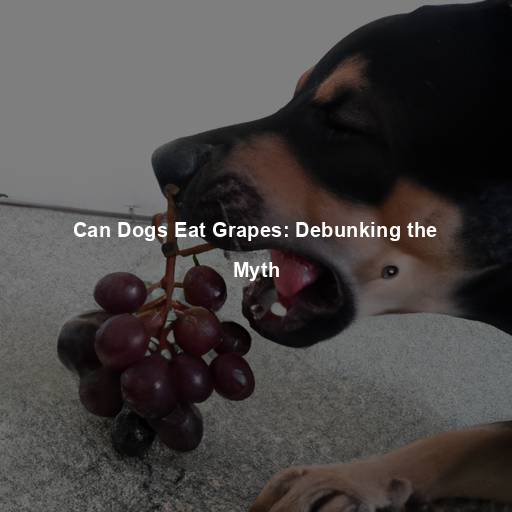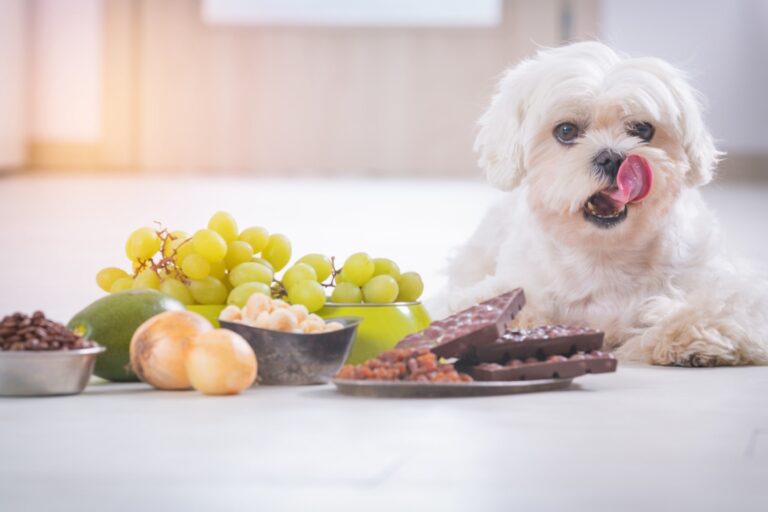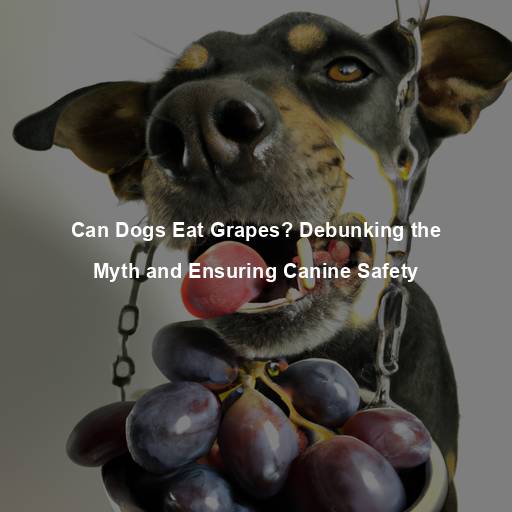All Goldendoodle Colors and Patterns Explained (With Pictures)
Last Updated on January 31, 2023 by Evan
Goldendoodles are highly sought-after designer dogs due to their gentle nature and low-shedding coats. They also come in a variety of colors from the Poodle side.
There are currently 13 Goldendoodle colors developed by breeders, such as chocolate/brown, apricot, red, cream, champagne, black, black and white, gray, blue, silver, silver beige, tan, and white.
Whether it’s sable, abstract, parti, tuxedo, phantom, merle, or brindle, this cross’s range of stunning color patterns makes it worth considering.
My guide aims to explain the various colors and patterns I have described above, including providing visual examples so you can know which one to pick when looking for a pup. That way, you can easily distinguish between them.
Contents
- 1 Do Kennel Clubs Recognize Goldendoodles and All Their Colors?
- 2 What Are the Difference Colors of Goldendoodles?
- 2.1 Chocolate Goldendoodle
- 2.2 Apricot Goldendoodle
- 2.3 Red Goldendoodle
- 2.4 Cream Goldendoodle
- 2.5 Champagne Goldendoodle
- 2.6 Black Goldendoodle
- 2.7 Black and White Goldendoodle
- 2.8 Gray Goldendoodle
- 2.9 Blue Goldendoodle
- 2.10 Silver Goldendoodle
- 2.11 Silver Beige Goldendoodle
- 2.12 Tan Goldendoodle
- 2.13 White Goldendoodle
- 3 What Are the Different Goldendoodle Color Patterns?
- 4 What Is the Most Popular Goldendoodle Color?
- 5 What Is the Most Common Goldendoodle Color?
- 6 What Is the Rarest Goldendoodle Color?
- 7 Goldendoodle Coat Genetics: Why Do Goldendoodles Have Many Different Colors?
- 8 The Effect of Coat Color on Goldendoodle’s Health and Behavior
- 9 Do Goldendoodle Puppies Change Color as They Grow?
- 10 Frequently Asked Questions
- 11 Final Thoughts: Which Goldendoodle Color Is Right for You?
Do Kennel Clubs Recognize Goldendoodles and All Their Colors?
Goldendoodles, like other designer dogs, are not recognized by major kennel clubs as a breed; therefore, there are no published standards for their acceptable coat colors.
Getting official recognition from a kennel club is a complex process and is usually only available for purebred dogs. Recently, reports have surfaced that The Kennel Club may be open to acknowledging crossbreeds.
They expressed concern over the number of breeders who fail to screen their breeding stock for health issues and abnormalities. For this reason, they intend to monitor them closely by having the crossbreed formally recognized.
If this comes to fruition, we may finally get standardized breed standards for Goldendoodles and other hybrid dogs. We’ll also have guidance on what colors to expect from these dogs.
For the moment, let’s focus on the available colors of Goldendoodle parents, which will be influential on the 13 shades I’ll explain shortly.
| Goldendoodle’s Parent Breed | American Kennel Club (AKC) Acceptable Colors |
|---|
You’ve likely noticed Golden Retrievers only come in three colors. The coat colors of Goldendoodles are usually determined by the Poodle parent, which has a wide selection of 10 standard shades and 18 non-standard colors.
In the following section, let’s look at all the existing Goldendoodle colors.
What Are the Difference Colors of Goldendoodles?
Are you skipping straight in? No problem! Ready to have some fun? Check out all 13 Goldendoodle colors with their fantastic pictures. You won’t be able to resist their charm!
See everything from lovely golden and ice cream shades to deep dark chocolate tones. All beautiful, unique, and full of life – each with its personality.
Chocolate Goldendoodle
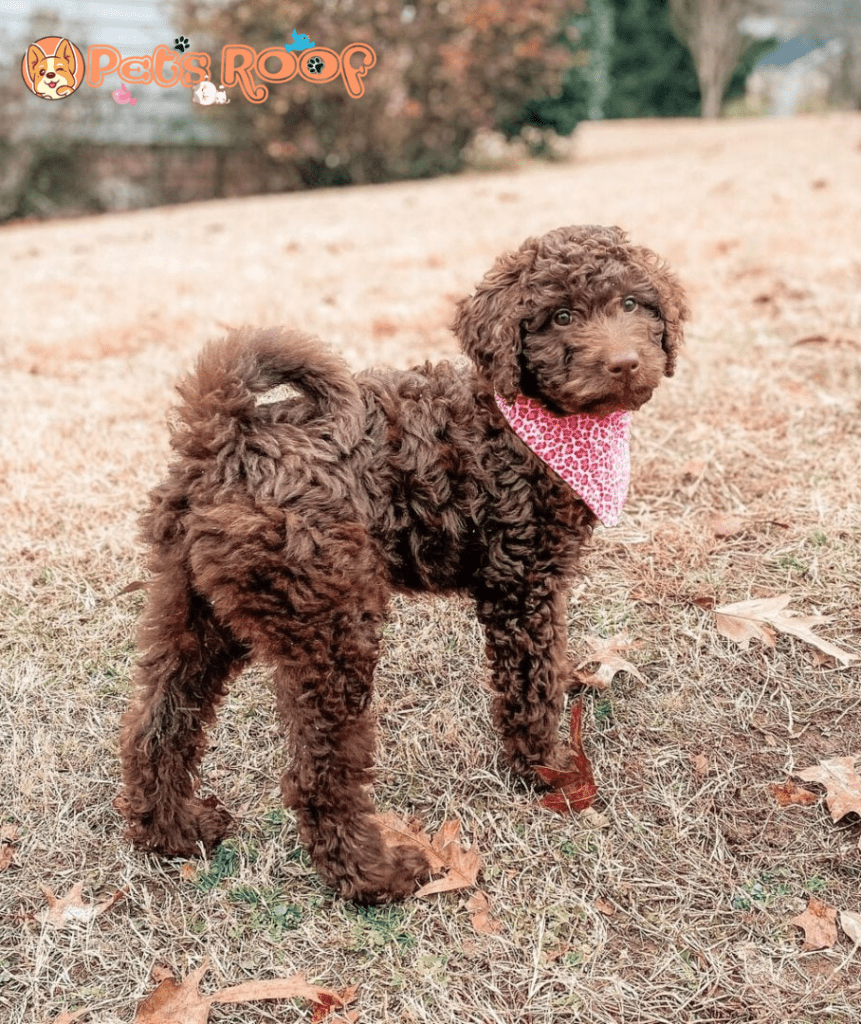
Chocolate Goldendoodles are the most common color and can be seen in many neighborhoods during morning walks. This rich brown color is from the dominant Poodle genes, but as they get older, they sometimes experience silvering. This means that their coat lightens to a silver beige.
Contrary to popular belief, breeding two chocolate Goldendoodles together won’t guarantee an exclusively brown litter. Since this color is mainly recessive, other colors may appear in their offspring due to other factors.
Apricot Goldendoodle

The apricot Goldendoodle is a cheerful-looking pup sporting an apricot-colored coat. It’s a variation of the red coloration that often fades over time, making it difficult to distinguish between the cream or tan pups.
Apricot Goldendoodles take after their Poodle parent and its teddy bear-like appearance; many have been known to seek these canine companions out for their unique traits. Interestingly, it was the last registered Poodle color to be accepted, meaning that apricot Goldendoodles are relatively new to crossbreeds.
Red Goldendoodle
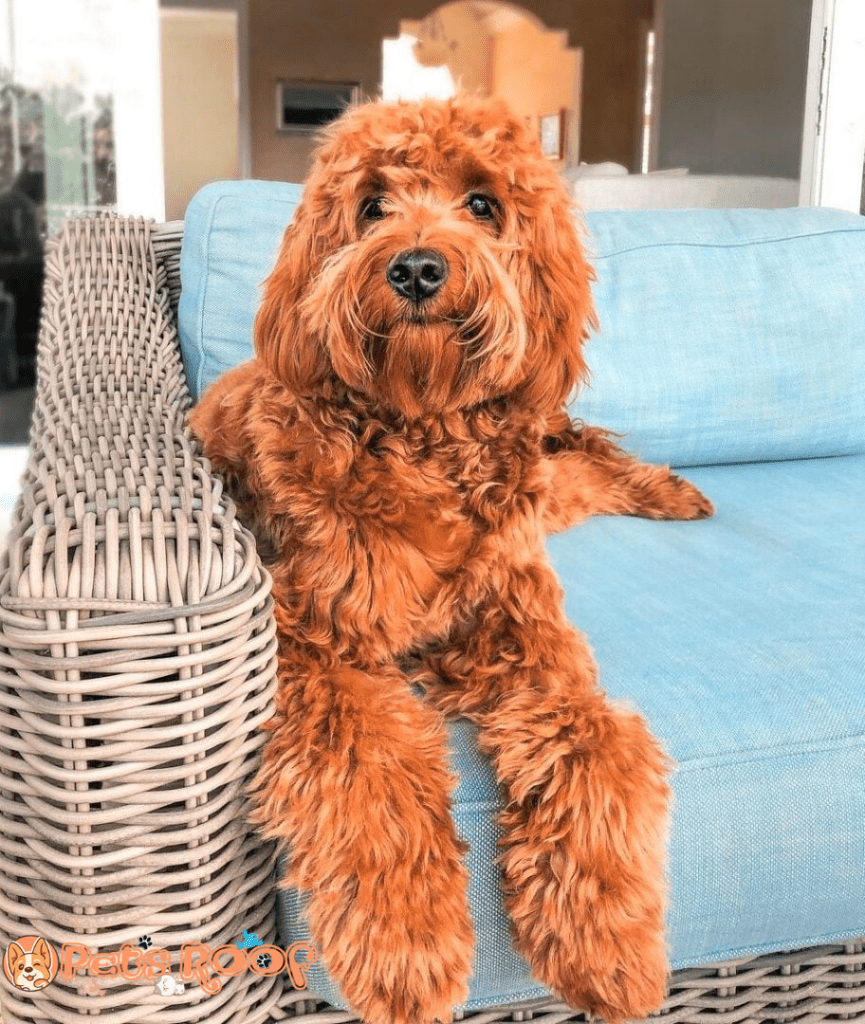
Red Goldendoodles are stunningly beautiful with their mahogany coat color. These classically lovely pooches have a dominant Poodle gene, so it’s no wonder why their distinctive shade of red stands out more than the others. They say reds are the brightest type of Goldendoodle, and we can undoubtedly notice them in a crowd!
The one thing to remember is that this breed might fade into a lighter shade as they mature. But no matter what, their elegance remains intact when you look at them! So if you’re looking for a pup with an eye-catching shade of red in its coat, you should get yourself a Red Goldendoodle.
Cream Goldendoodle
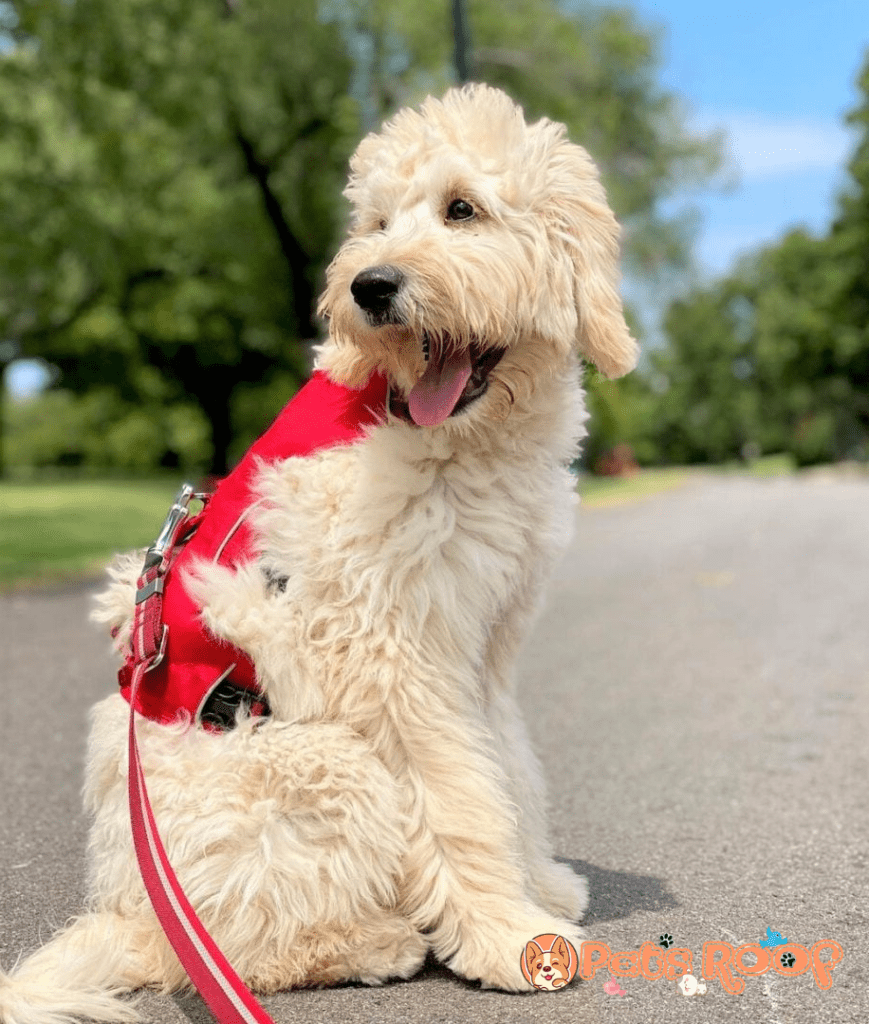
Cream Goldendoodles are a light-colored breed of the ever-popular Goldendoodle. They are often mistaken for a white Goldendoodle or a Labradoodle due to their very light coloration. In terms of physical attributes, it is tough to differentiate since no two cream Goldendoodles are precisely alike.
These dogs have the most variation in coat tones and points, so you can expect to see ones with darker eyes, noses, and toenails, as well as lighter features. Some even have a pinkish hue underneath their coat!
These petite pups may be small, but they’ve won hearts everywhere with their personality and unique coat colors!
Champagne Goldendoodle
Champagne Goldendoodles are a relatively rare breed of pup, but they’re worth considering if you want a teddy bear-looking pup! These pooches possess the recessive red gene, diluted to form pale yellow or cream colors, so they have a friendly light tone.
Unlike other Goldendoodles, Champagne Goldendoodles don’t usually make much noise, so if you’re looking for something quieter, these pups might be just what you’re shopping for. However, remember that it may take some searching to find one because of its rarity!
Check out this video for an up-close view:
Black Goldendoodle
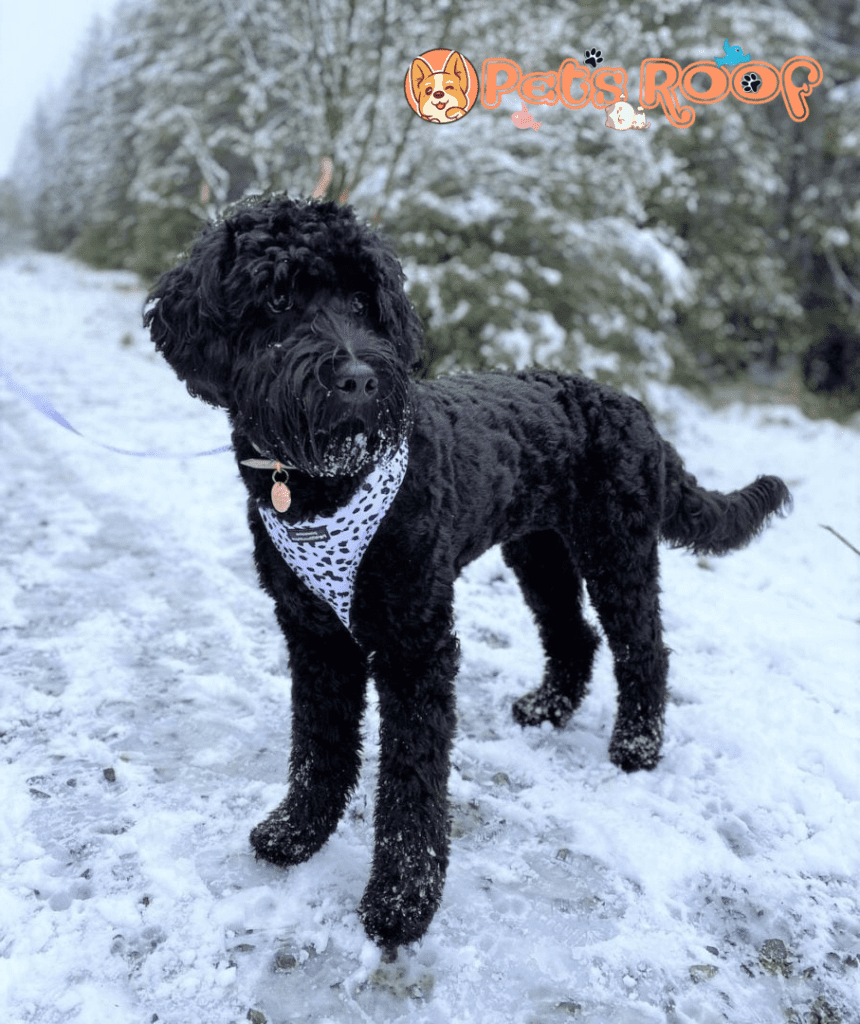
When it comes to Goldendoodles, one of the most beautiful colors is the jet-black Goldendoodle. Their smooth coat looks stunning, and their jet-black eyes and nose mesmerize. These black pups can later turn silver or blue, but their eyes, nose, and paw pads typically stay pure black due to the silvering process.
If you’re looking for a pup with a glorious color, then you should seriously consider getting a black Goldendoodle! They are truly magnificent animals that will turn heads wherever they go!
Black and White Goldendoodle
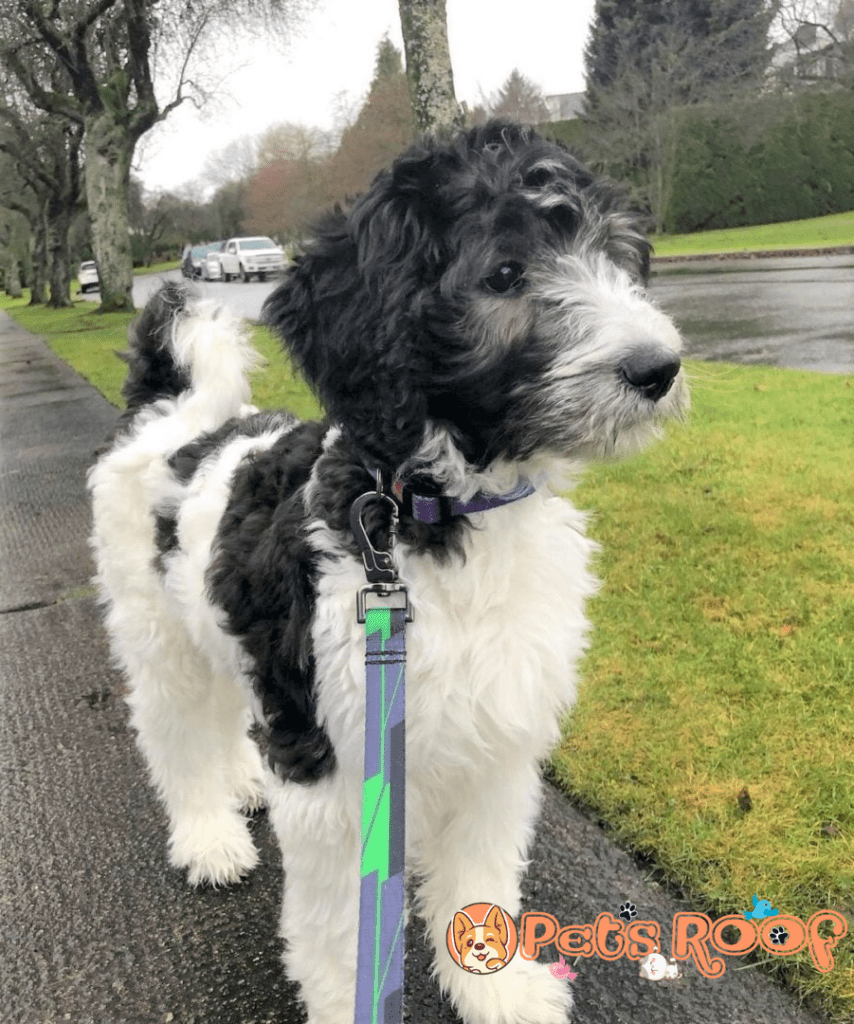
Black and white Goldendoodles are a unique combination of two colors that can make a beautiful pup. The ratio of black to white will vary by dog – for some, the white may be more dominant, while others are primarily black.
It’s important to note that not all black/white Goldendoodles should be called Tuxedo, which refers to a specific coat pattern. We’ll explore that later as we dive into the various color patterns associated with these fantastic dogs.
For now, it suffices to say that black and white Goldendoodles make up one of the most stunning pups around!
Gray Goldendoodle
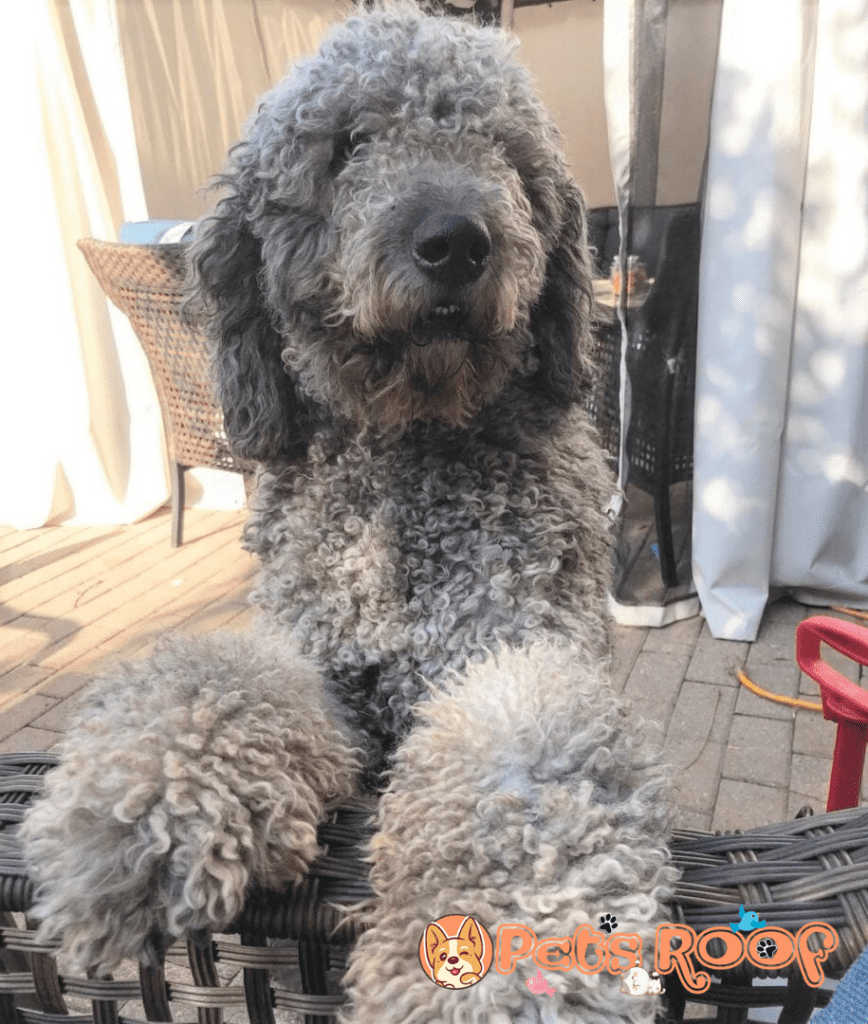
Gray Goldendoodles may start with dark coat color, but they eventually show off a gray coloring after around six weeks. As they age two years old, the gray turns into a beautiful rustic silver, giving it an even more alluring look!
If you’re looking for something special and unique, then the gray Goldendoodle is the one for you. Not only do they have exciting coloring but also eye-catching variations that make for an unforgettable companion.
Blue Goldendoodle
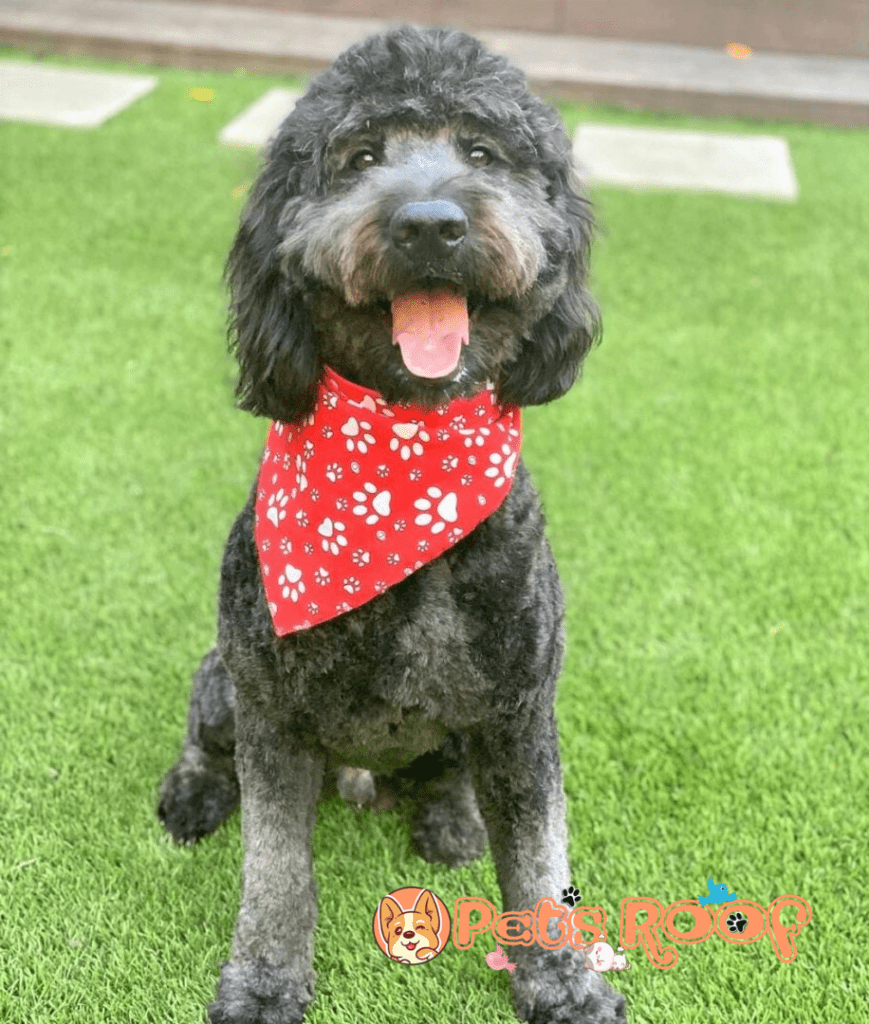
Blue Goldendoodles are a rare breed of doodles that grew out of multiple generations of Goldendoodle breeding. Although they may look similar to the gray ones at first glance, these precious puppies are distinctly different.
What makes blue Goldendoodles so special is that their coats retain their color as they age. It sets them apart from their gray relatives – many of whom will eventually clear in color as they mature.
So if you’re looking for a unique-looking pup who won’t lose his hue, the blue Goldendoodle may be for you!
Silver Goldendoodle
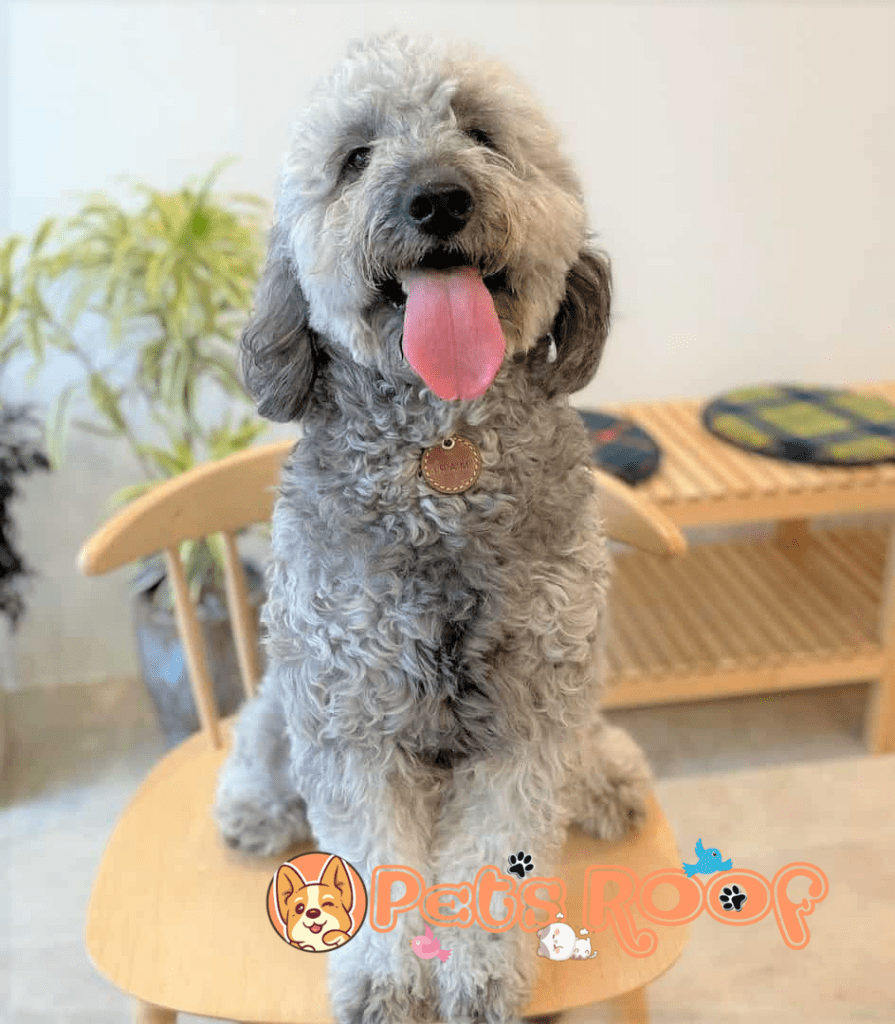
Silver Goldendoodles are a unique type of Goldendoodle that may look similar to other colors and patterns but are distinct. They have lighter fur than gray or blue Goldendoodles, resembling the hair of an elderly individual.
Most silver Goldendoodles will show signs that they are silver at 6-10 weeks old. Their coats vary with the degrees of lightness, which can range from a light grey color to a stunning snow-white tone. All these different tones make them relatively easy to identify amongst other Doodles.
Silver Beige Goldendoodle
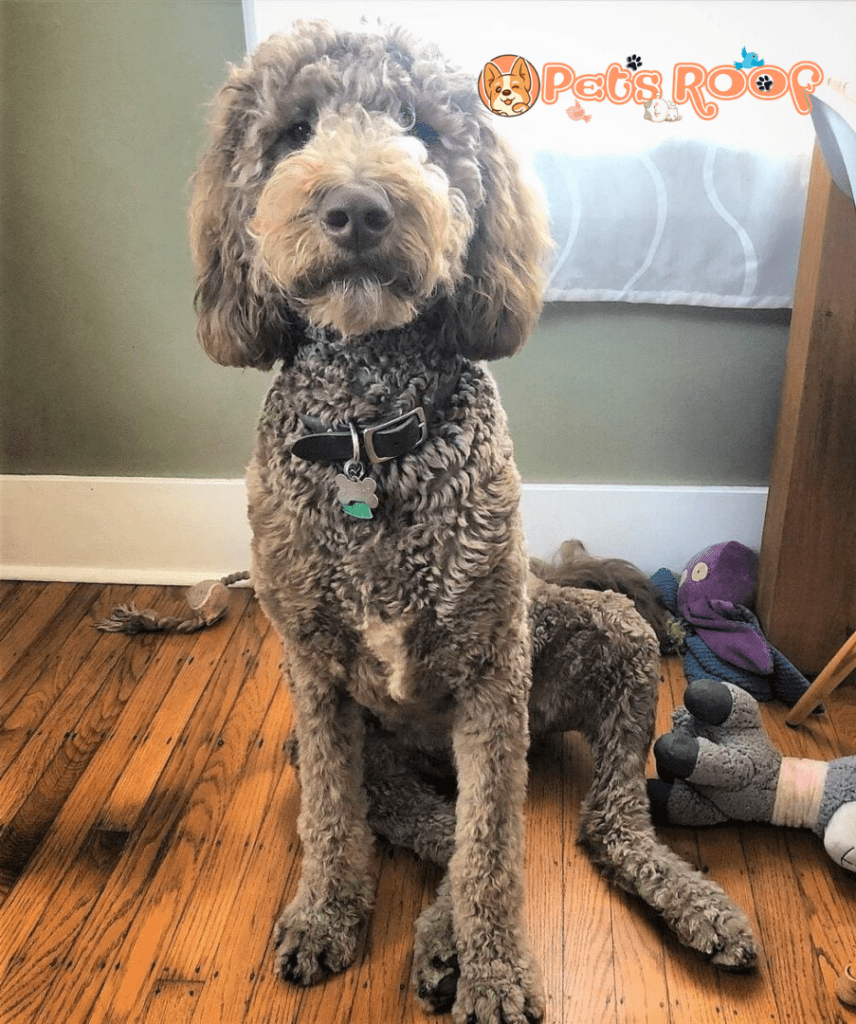
If you’re looking for a unique Goldendoodle color, then the silver Beige is one to consider. These particular doodles are born with chocolate-colored fur to create this striking coat. But then, something magical happens thanks to specific genes – their color clears, and they become silver beige!
So why is it unique? Well, these pups don’t have black-tipped hairs like sables do. The combination of silver to gray hairs and beige coloring gives off the effect of being a sable – how cool is that?
This soft hue should not be confused with sables since it doesn’t contain those dark tips usually associated with them. All in all, silver beige Goldendoodles make for a beautiful pup, perfect for any home!
Tan Goldendoodle

Tan Goldendoodles are not as common as the reds and apricots, but they are well-received by some breeders because of their subtle tone. Their coat color is due to a dilution in their pheomelanin pigment, which is red in default.
While they may be few and far between, these tan Goldendoodles make beautiful companions having an elegant and gentle look that has made them popular with many dog owners.
These low-shedding dogs are easy to maintain with their minimal grooming needs; their coats come in various smooth textures depending on the percentage of their poodle ancestry.
Tan Goldendoodles make for loyal, friendly companions that enjoy spending time with their humans and require moderate exercise to keep them healthy and fulfilled.
White Goldendoodle
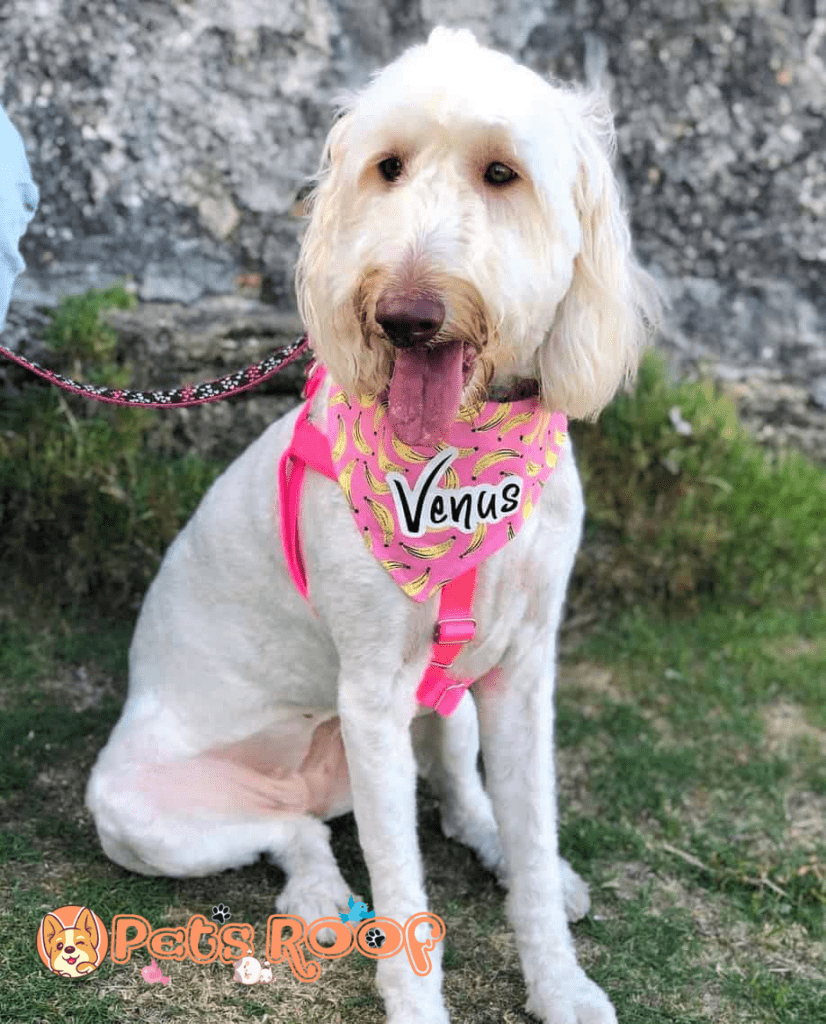
White Goldendoodles have a unique coat color – they are not entirely white, but there is a cream-colored hue on certain sections of their bodies. It’s believed that this trait comes from their Poodle parents, as Golden Retrievers do not naturally come in white coats.
If you get the chance to see a white Poodle up close, you’ll also observe a similar cream tint throughout its coat.
A White Goldendoodle can make an ideal pet companion due to its beautiful coloring and loving temperament. These puppies will bring your home lots of life and cuddles – nothing quite like having an adorable white pup running around the house!
What Are the Different Goldendoodle Color Patterns?
Goldendoodles stand out for more than just their fantastic range of colors; the patterns on the coat are particularly extraordinary. Let’s examine their seven varieties.
Sable Goldendoodle
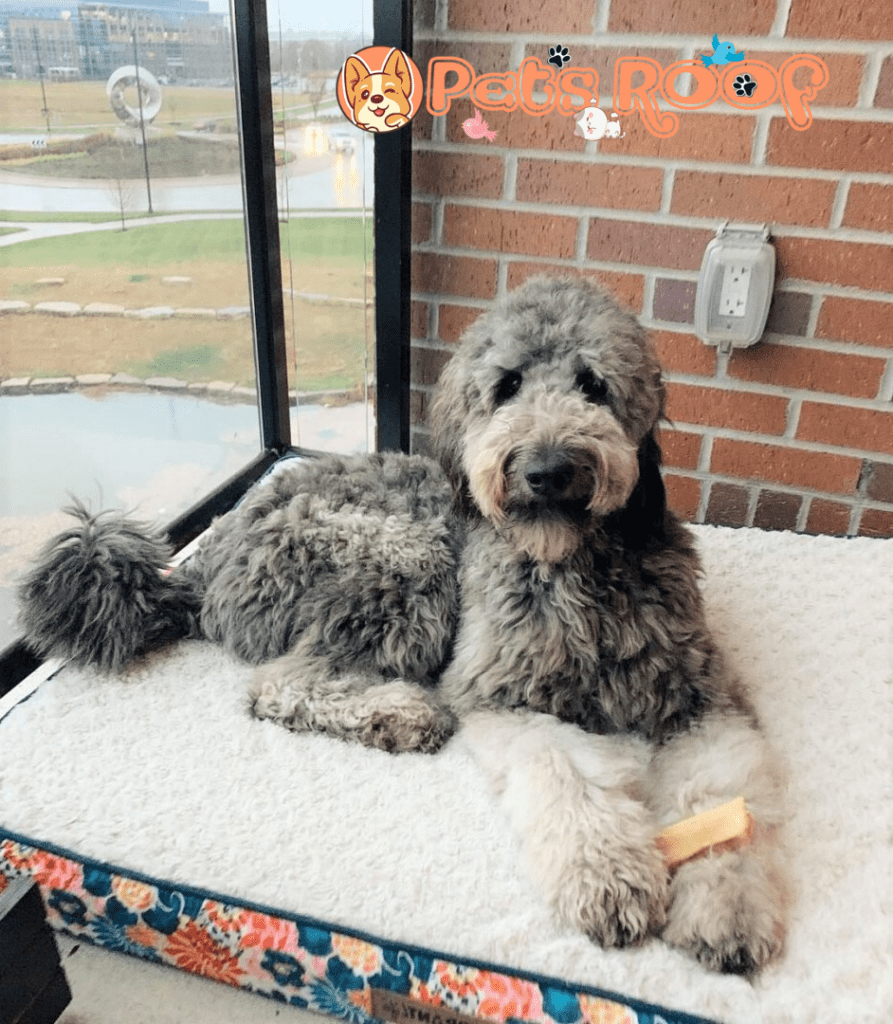
Sable Goldendoodles stand out due to their unique coloring. You’ll recognize them when you see them as they have dark-tipped hairs that lighten closer to the skin. Though novice pet owners may be uncertain, this is typical for this specific hybrid breed.
The underlying base coat color can be one of the 13 possibilities I mentioned earlier, making it fun and exciting to observe these fur babies!
Abstract Goldendoodle
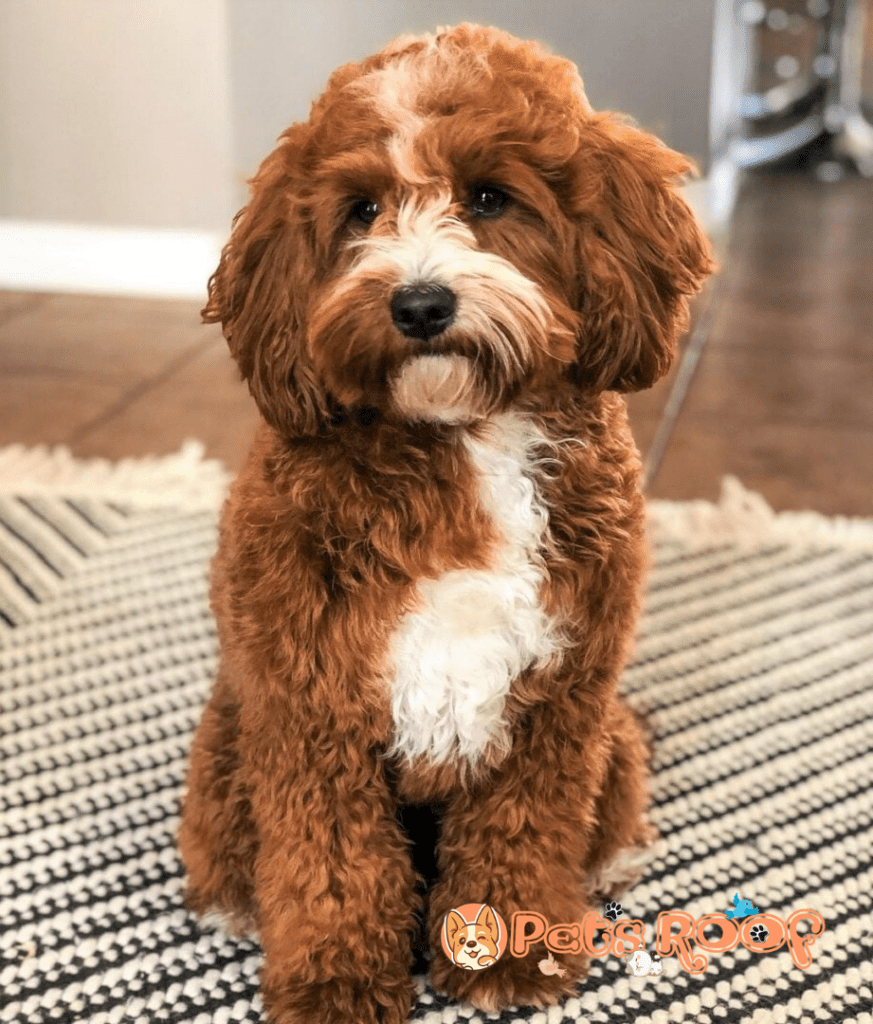
The Abstract Goldendoodle is an excellent choice for owners looking for a unique pup. Typically, these Goldendoodles will have patches of white on their coat in various places.
This could include their face, chest, and paws. These color patterns can make them stand out amongst other varieties of Goldendoodles.
Not only does this color pattern give them an exciting and eye-catching aesthetic, but it also makes it easier for owners to identify them! It’s essential to recognize that lighter-colored fur will require extra care and effort during grooming.
But if properly cared for, the unique coloring of an Abstract Goldendoodle can be truly amazing!
Phantom Goldendoodle
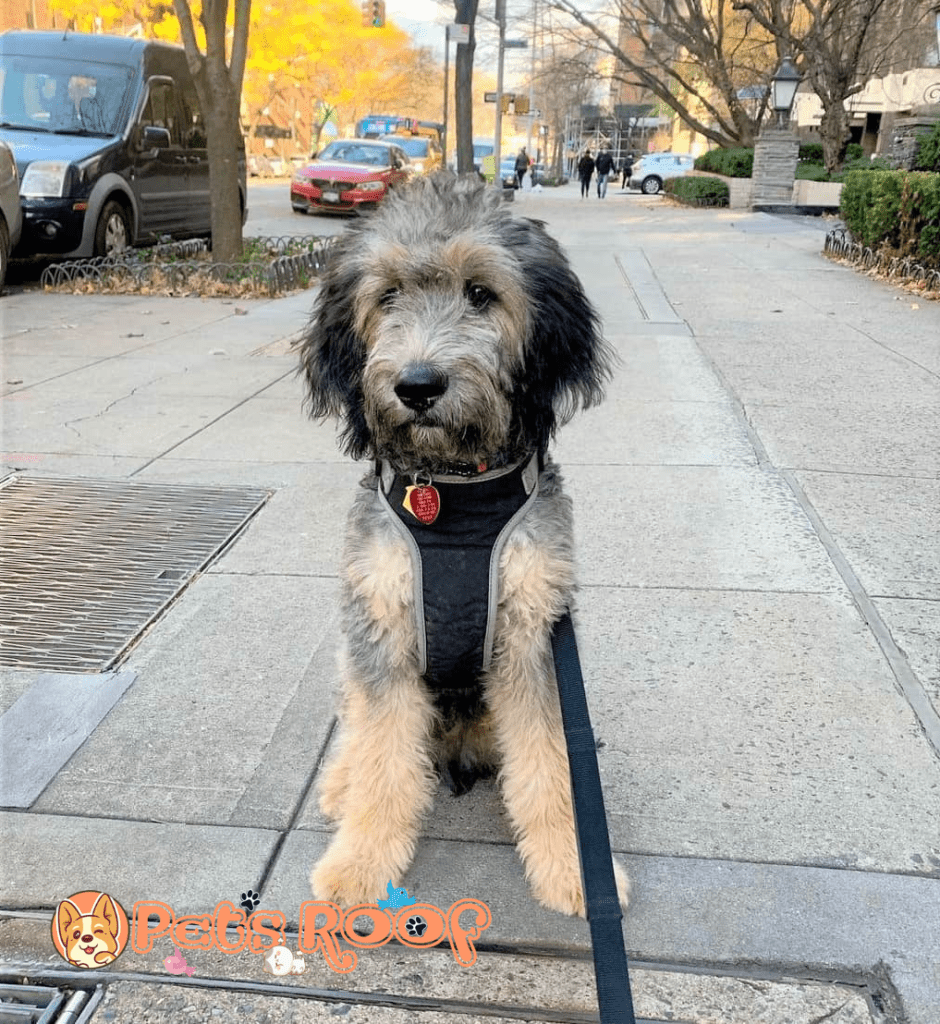
These hard-to-find pups have coats with two colors making up the base. The lighter shade of color is often seen on their eyes, muzzle, and legs, adding to their unique look. This beautiful pattern has been documented in many studies as one of the rarest Goldendoodle colors available!
Not only are Phantom Goldendoodles unusual in color and pattern, but they also make excellent pets due to their witty and outgoing personalities.
Parti Goldendoodle
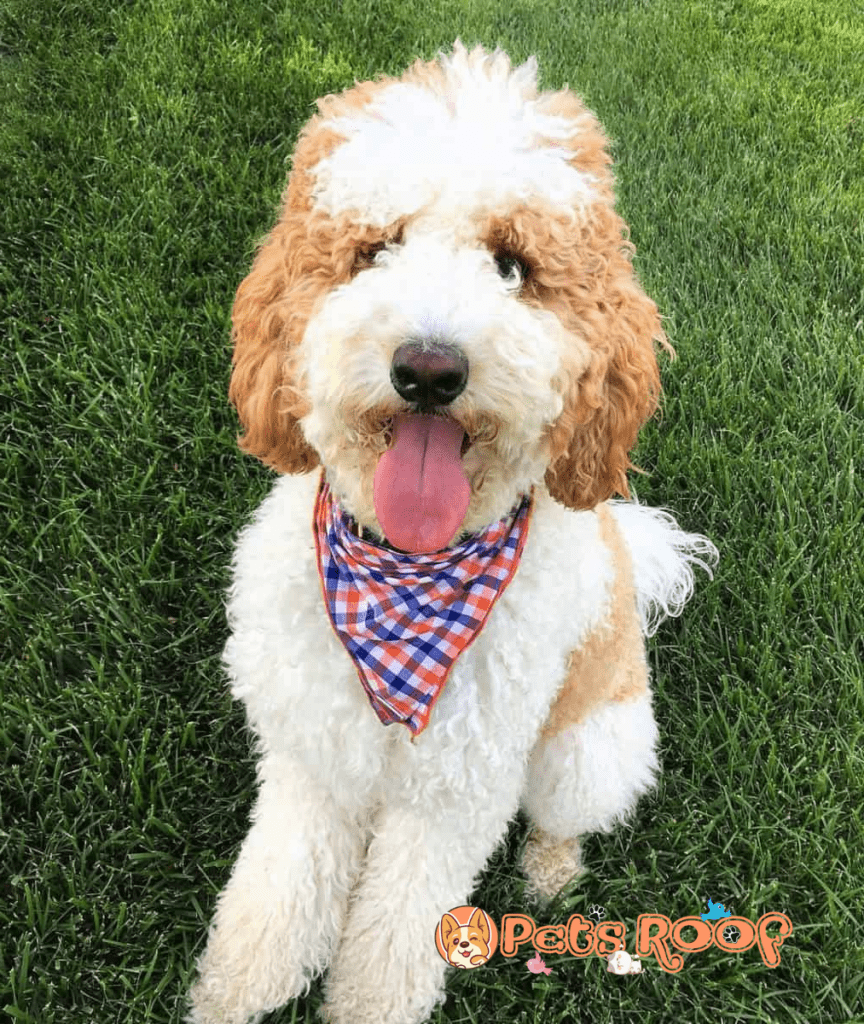
Parti Goldendoodles are one of the breed’s most striking and sought-after color patterns. They are distinguishable from other Goldendoodle colors due to their unique combination of two colors in their double-coated fur: white and any color acceptable for the breed.
Each Parti Goldendoodle pup will be unique, given that no two puppies would have a similar coat pattern. This is because they are developed through multi-generational Goldendoodle breeding, meaning it has taken a few generations of dogs to come up with this specific color pattern.
These gorgeous pups will also have 50% white coloring in their coats, while the other half is whatever color they may have inherited from previous generations.
Tuxedo Goldendoodle
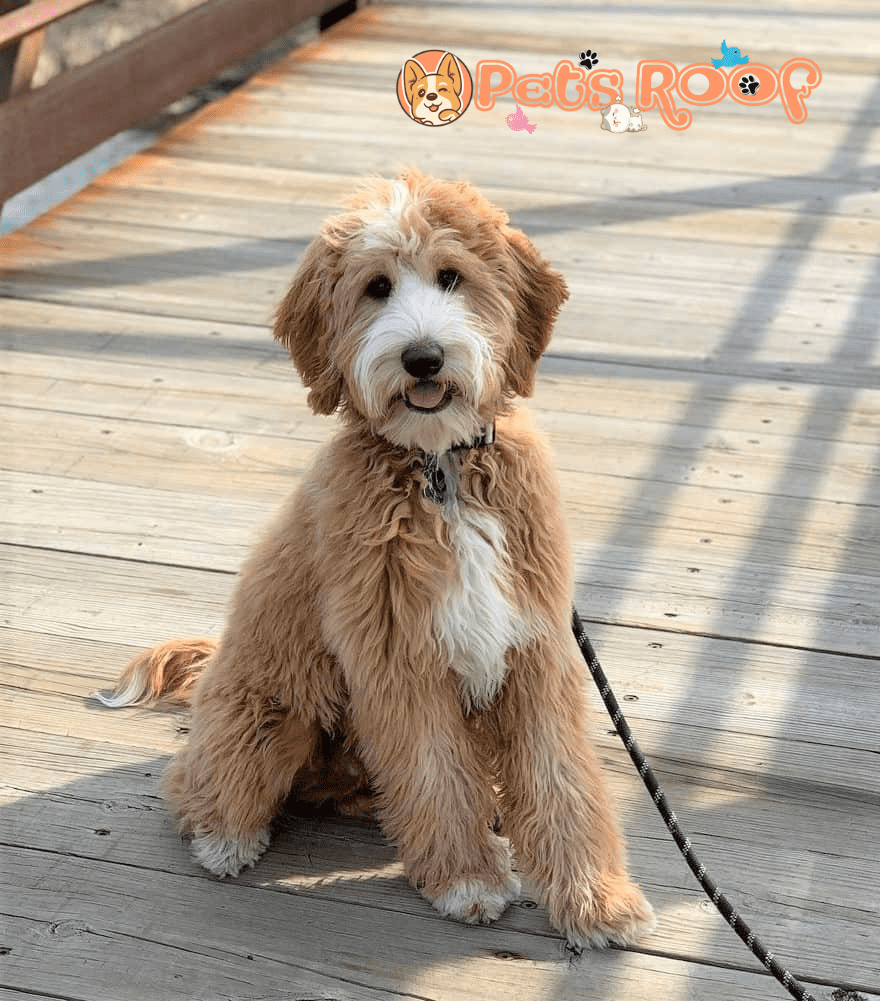
The Tuxedo Goldendoodle is popular among doodle owners due to its unique and eye-catching color pattern.
As the name suggests, this pattern features white markings concentrated on the chest and legs of the dog, creating the illusion that they are wearing a tuxedo! This stunning pattern is well-known for its exquisite beauty and unique style.
These classic doodle colors have a range of colors, including silvery golds, cream whites, and rich browns, that all blend to make this beautiful pup look like it hopped straight out of a classic painting.
The classic Tuxedo Goldendoodle can also show variations with white markings taking on different patterns, such as Tri-Colored or Sable Tortoiseshell markings.
Merle Goldendoodle
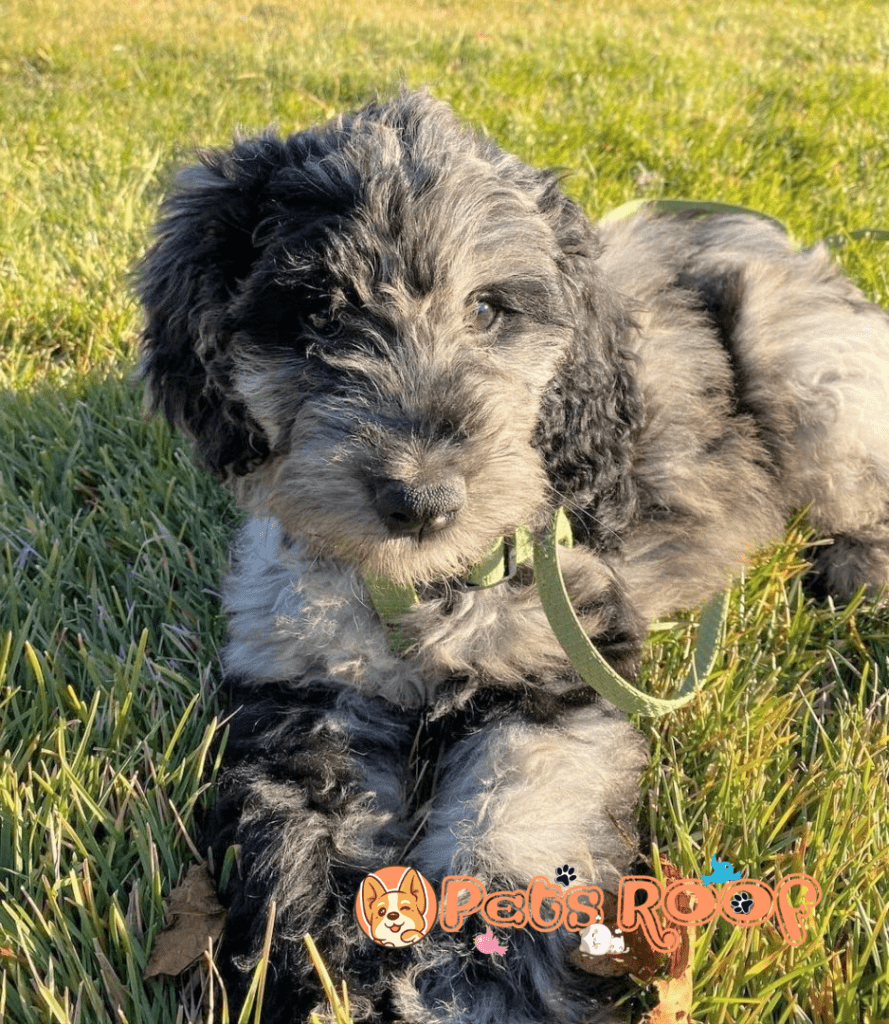
Merle Goldendoodles have been becoming increasingly popular as family pets in recent years. These pups usually have some unique patchwork or tickings on their bodies, depending on their type of merle.
The classic merle Goldendoodle will typically have some blue or chocolate-colored patches and tickings along its coat, making them quite a sight to behold!
Besides that, you can also look out for the rarer watercolor merles, who often have tickings on their coats that lighten as they age.
Brindle Goldendoodle
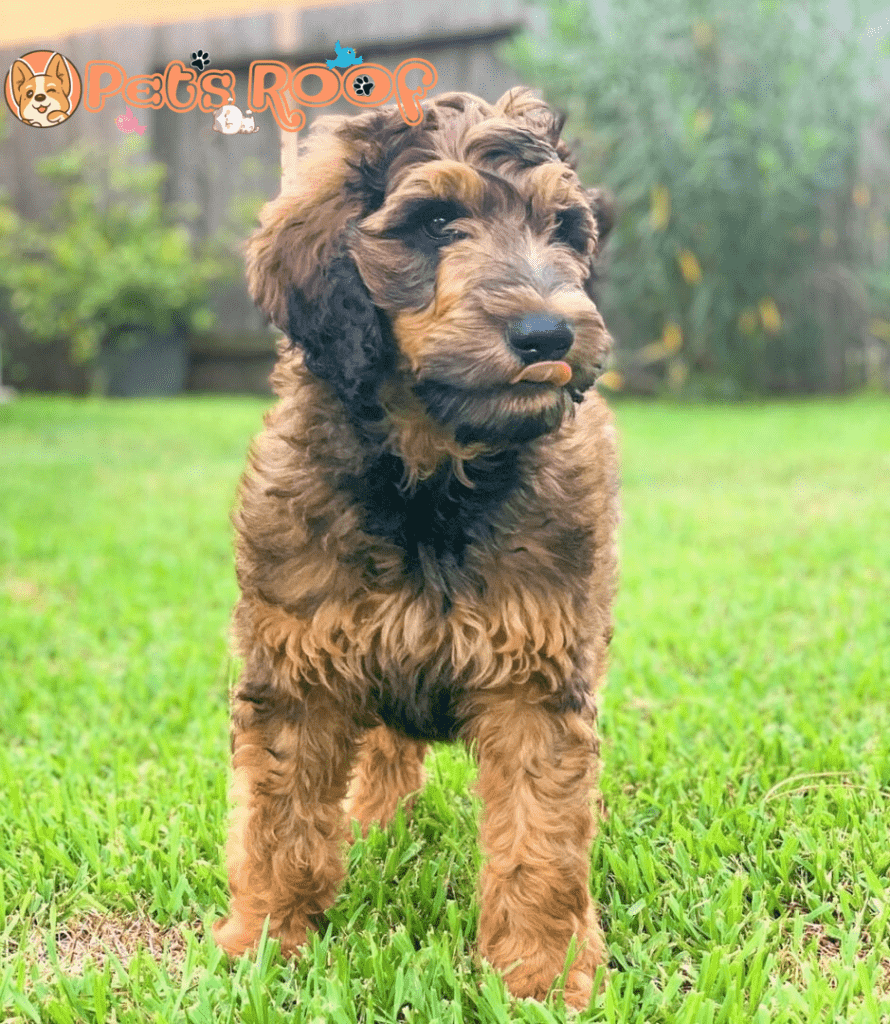
Brindle Goldendoodles are a fantastic variety of Goldendoodles with dark skin patterns resembling tiger stripes.
What’s unique about these pups is the light base color of their coat, which allows the dark stripes to stand out and make a statement.
In addition to their unique appearance, Brindle Goldendoodles are also known for being amiable and cheerful creatures that love to play and socialize with their owners and other pets.
What Is the Most Popular Goldendoodle Color?
According to many doodle fanatics out there, it’s apricot. Out of all the colors and patterns, this lovable cross between a Golden Retriever and a Poodle comes in; apricot is one of the most sought-after hues.
Following that popularity would be cream and red, as these are also widely desired by many doodle owners. Even sables are becoming more popular, too – and although they may reach a different level than apricot, cream, or red, their popularity has grown over time.
All these colors carry an extra bit of cost due to their high demand, so they are pricier than other colors of doodles.
What Is the Most Common Goldendoodle Color?
Among Goldendoodle enthusiasts, black is the most common color. Despite being popular, they aren’t highly sought after by people who enjoy this breed due to their lack of a teddy bear-like appearance.
Apricots, reds, and creams are relatively popular but not nearly as common as black Goldendoodles.
What Is the Rarest Goldendoodle Color?
Want to know which Goldendoodle color is the rarest? If so, you’ll have to look at the dogs beyond F2 or second generations.
They will only produce the rarest colors through multi-generational breeding, which are:
- Blue
- Gray
- Silver
Along with the unique colors, two unique patterns are found in a few Goldendoodles—the phantom and parti. As with the other three rare colors, you can achieve these patterns through multi-generational breeding.
Goldendoodle Coat Genetics: Why Do Goldendoodles Have Many Different Colors?
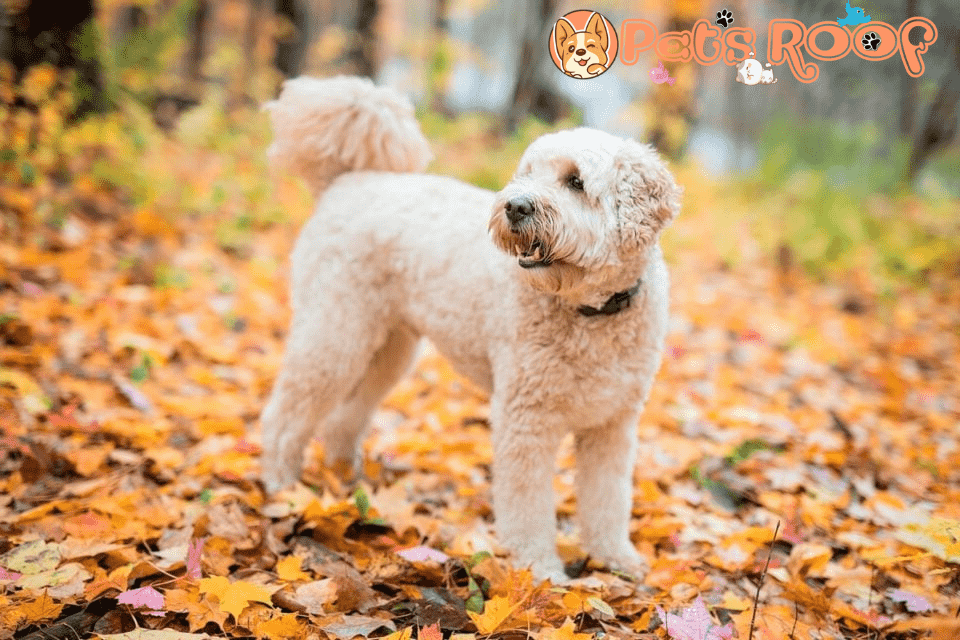
To better understand why Goldendoodles have so many different colors, it’s essential to understand the basic genetics behind a dog’s coat.
Two primary pigments give rise to the shades and patterns of Goldendoodle coats; eumelanin and pheomelanin.
Eumelanin is black in its default form but can be diluted due to genes passed down from the parent doodle. This pigment is responsible for eye and nose pigment as well.
The second pigment, pheomelanin, is primarily red in its natural form but can become lighter shades like cream, tan, or apricot when altered by dilution genes.
To get consistent offspring with certain defined traits – like color – breeders must determine if both parents are carriers of a particular gene that will produce this desired outcome through DNA testing.
Many Goldendoodles will lighten with age as they carry dilution genes. At the same time, some have recessive genes, making them appear much different than the dog’s parents in looks and coloration when they reach adulthood.
The Effect of Coat Color on Goldendoodle’s Health and Behavior
The coat color of a Goldendoodle does not affect its health or behavior. There is simply no scientific evidence to suggest otherwise.
Unfortunately, some people make assumptions about the breed based on its color, such as assuming that black-colored Goldendoodles are aggressive.
When it comes to health, Goldendoodles can be prone to certain conditions regardless of their color—with subvalvular aortic stenosis, hip dysplasia, Addison’s disease, and cataracts being the most common.
Research by the University of Sydney suggests that chocolate Goldendoodles may be particularly susceptible to ear infections and skin diseases.
Merle Goldendoodles, meanwhile, are more likely to develop deafness, blindness, and various skin sensitivities due to their unique coloring. However, you can manage these issues with proper care from the owner.
Do Goldendoodle Puppies Change Color as They Grow?
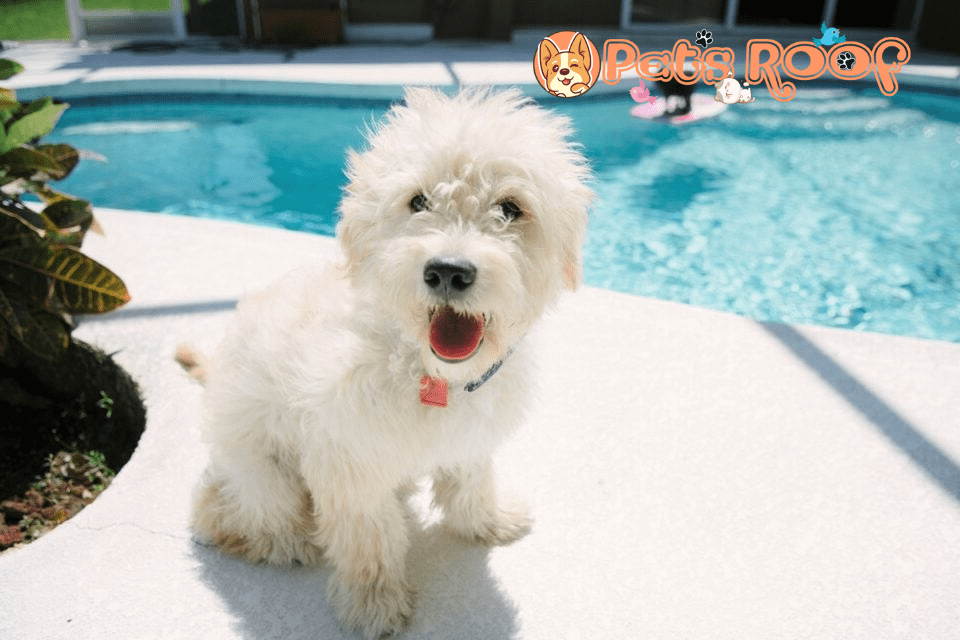
The answer is yes. This is because Goldendoodles have genes from both the Poodle and Golden Retriever breeds, which can cause them to experience subtle color alterations during their maturation period.
Red and its lighter variants will mostly lighten over time when they reach two years old. However, this isn’t to say that other colors won’t change too.
These other colors may be silver or turn blue, silver-beige, or any combination of those hues through a process known as “silvering.” This phenomenon is more prevalent in black and chocolate Goldendoodle puppies.
Frequently Asked Questions
What Are the Three Types of Goldendoodle Coats?
Goldendoodles are known for their unique coats and come in three distinct types. The most common is the wavy or shaggy coat, which occurs in all generations of Goldendoodle. As it’s easy to maintain, this coat only needs brushing once or twice a week.
The second type is the curly coat inherited from the Poodle lineage and seen in F1b and some multi-generational Doodles.
The last type is flat, or improper, for this particular crossbreed. It resembles Golden Retriever coats, which do not go with the desired ‘teddy bear look’ that most breeders aim for when breeding Goldendoodles.
Is F1 or F2 Goldendoodle Better?
It is often debated which Goldendoodle generation is better: F1 or F2. The answer may depend on your unique needs and preferences for the breed.
The first-generation crosses, or F1 Goldendoodles, are more genetically pure because they are bred directly from Golden Retrievers and Poodles without any other breeds introduced in different generations.
However, if genetic purity isn’t a factor when considering which Goldendoodle to purchase, opting for an F2 may be just as good since there aren’t significant differences in their appearances.
Is Goldendoodles High Maintenance?
Goldendoodles are low-maintenance dogs. Despite their beautiful coats, you don’t need to spend hours grooming them every day – a good brushing once in a while is usually enough to keep their skin looking great!
The longer or curlier the Goldendoodle’s coat is, the more often they may need brushing; this will help prevent their minimal shedding from getting out of hand. However, for the most part, you’ll find that Goldendoodles require far less maintenance than many other breeds.
In short, if you’re looking for a low-maintenance hybrid dog with an eternal smile, the Goldendoodle is worth considering!
Are Goldendoodles Hypoallergenic?
While no dog is entirely hypoallergenic, Goldendoodles are known to be one of the more allergy-friendly crosses. They’re often considered less risky for those with allergies because they shed minimally.
If you want to be sure that you’re getting a Goldendoodle that barely sheds, then look for generations that end in “B,” like F1B, F1BB, F2B, and F2BB – these are often referred to as backcrossed Goldendoodles which have been bred with Poodles and therefore shed even less than other types of Goldendoodles.
Final Thoughts: Which Goldendoodle Color Is Right for You?
Choosing the right Goldendoodle color and pattern can mean different things to different people, so deciding which one is best for you is essential.
If you’re a current parent of a Goldendoodle, you already know which shade your furry companion is.
However, if you’re a fan looking for the perfect variety, remember what you have learned during your research so you don’t mistakenly purchase a pup bred solely for its coloring.
Consider your lifestyle and preferences when picking a Goldendoodle color and pattern. Can you handle an extra curly coat, or do you prefer sleek fur? Or maybe vibrant tints of red and orange interest you more than solid black shades.
Make sure that whatever choice you make is the one that fits in with your everyday life.


